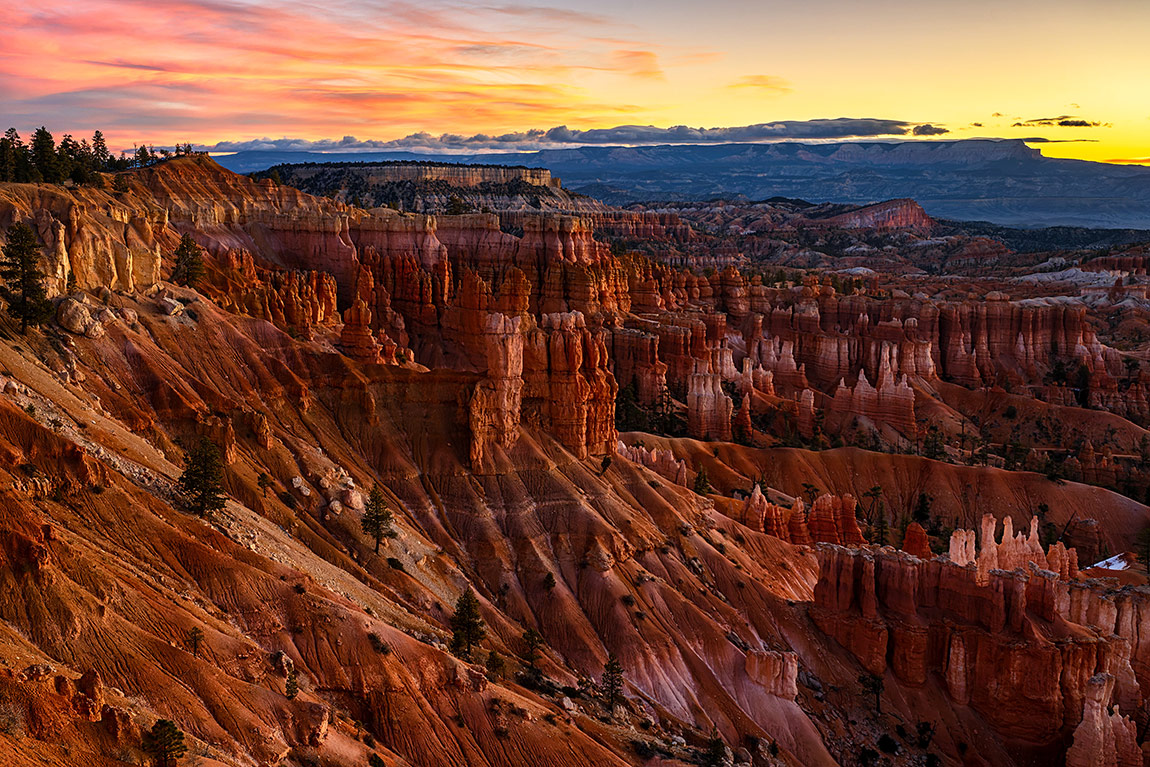Part of the Colorado River plateau in southern Utah, Bryce Canyon National Park sits astride Tertiary Period limestone, mudstone and sandstone deposited in a 1,300-foot thick layer called the Claron Formation. Soft and easily eroded, this layer lends itself to the formation of 'hoodoos' – columns of rock capped by erosion-resistant dolomite that form by the thousands to yield a spectacularly unique display.
The photographic challenge is to balance the intricate detail of the scene with its size and grandeur. I chose a viewpoint along the rim of the canyon situated between two popular locations – Sunset Point and Sunrise Point.
As the blue hour light increased, the canyon below me started to fill with a lovely soft glow, providing a beautiful side light that created both emphasis and contrast on the multi-hued hoodoos and gullies that stretched out before me. The stair-stepped 'Grand Staircase', profiled in the upper right-hand portion of the frame, creates visual interest and a geologic reference point to the top of the plateau that provides the stone heart of Utah's 'Canyon Country.'
I am thankful for the forethought of those who identified this site as worthy of protection as a National Park. It has been preserved for the enjoyment of those who are able to visit, and I hope for those who are able to view this photograph.


